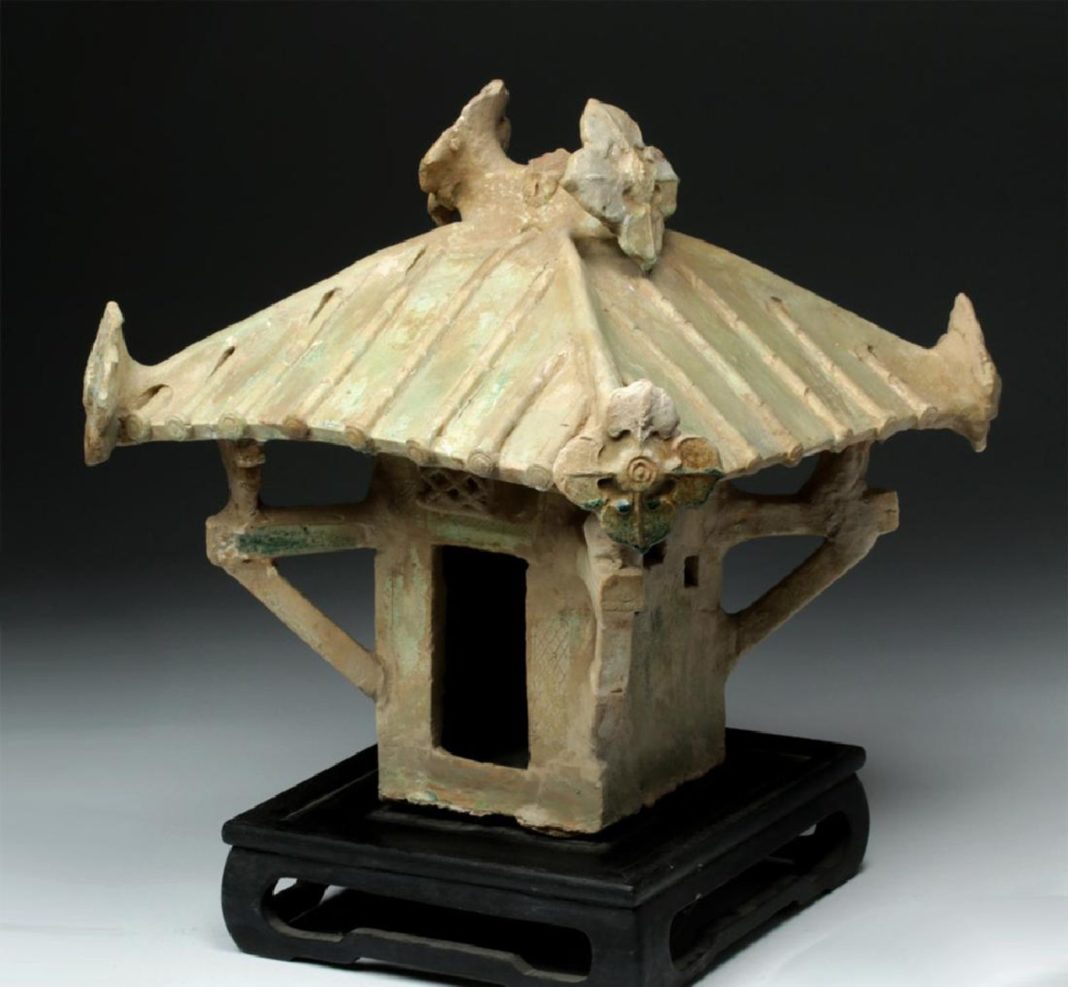Artemis Gallery will conduct an exciting auction brimming with fresh-to-market ancient treasures on Thursday, March 15. The sale is composed of 432 lots with impeccable provenance and ironclad guarantees of authenticity and legality. Absentee and Internet live bidding will be available through LiveAuctioneers.com.
Artemis Gallery co-founders Bob and Teresa Dodge have gathered classical antiquities, ancient and ethnographic art from cultures encompassing the globe for this auction, including Greek, Roman, Near Eastern, Asian, Pre-Columbian and Viking.
The auction will open with a fine selection of more than a dozen Egyptian antiquities before venturing to Ancient Greece. Starring in the latter category is a red-figure bell krater created in the Greek Campania region of southern Italy, circa 340 to 320 B.C. The 12-inch-tall vessel is well-painted showing a finely dressed female draped in a flowing chiton on one side and a standing youth draped in a long cloak and holding a walking stick on the other. Such large bell kraters were used to mix wine and water for ceremonial banquets and celebrations. This piece, which carries an $8,000-$10,000 estimate, was published in The Red-Figured Vases of Lucania Campania and Sicily by A.D. Trendall (Oxford at the Clarendon Press, 1967) – Plate 194.
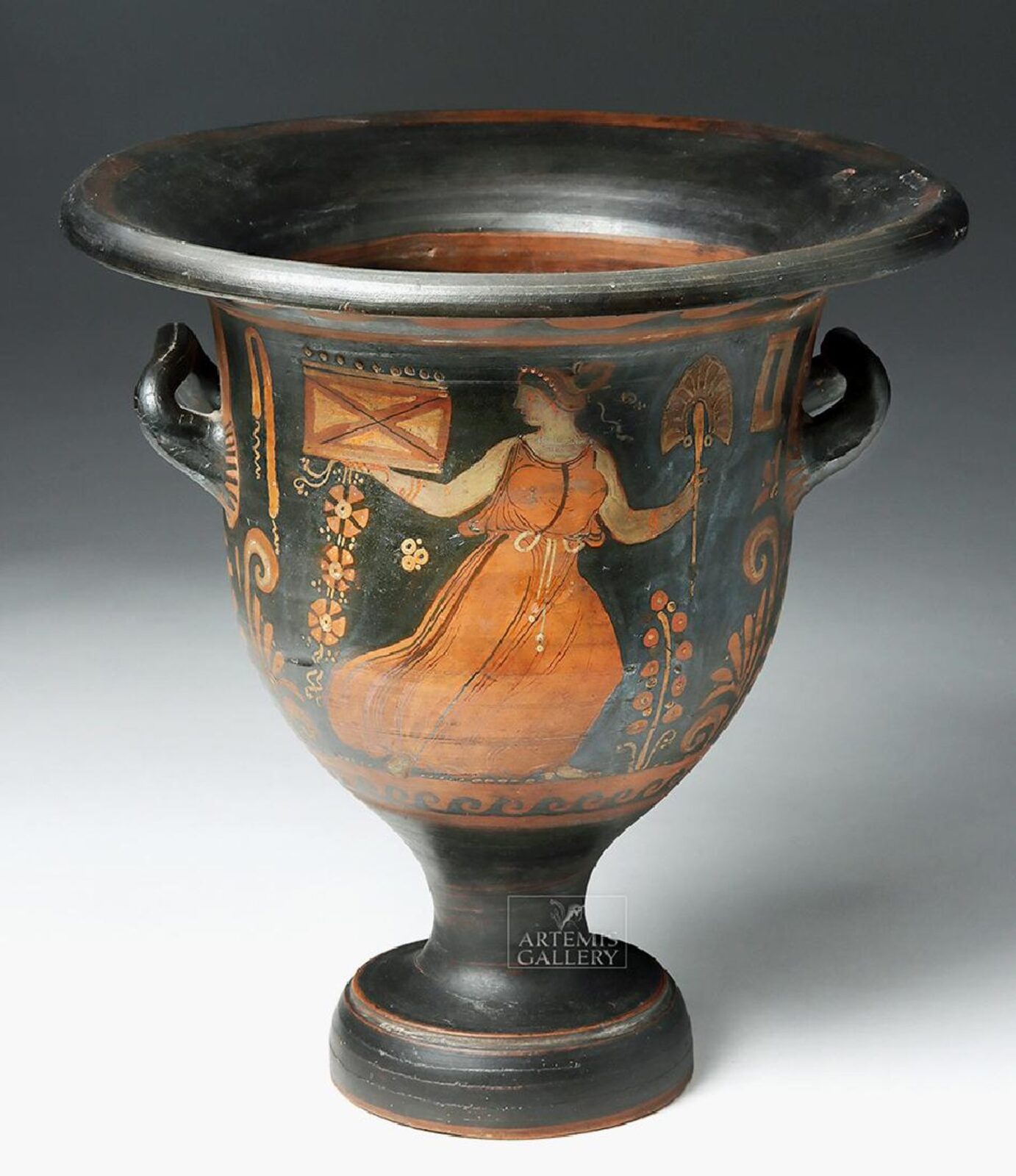
Est. $8,000- $10,000
Moving on to the Roman Empire, the auction offers an exquisitely carved marble female figure of a muse holding a mask in her left hand and a wind instrument in her right hand. This beautifully carved 21-inch-tall statue from around the 1st or 2nd century CE stands in classic contrapposto, with her weight shifted to her left leg and her right leg gracefully bent, the foot back and slightly to the side. This idealistic representation displays the sculptor’s inheritance of the Classical Greek tradition, demonstrating a continued Greek influence over Roman sculptors. The statue is expected to sell for $20,000-$30,000.
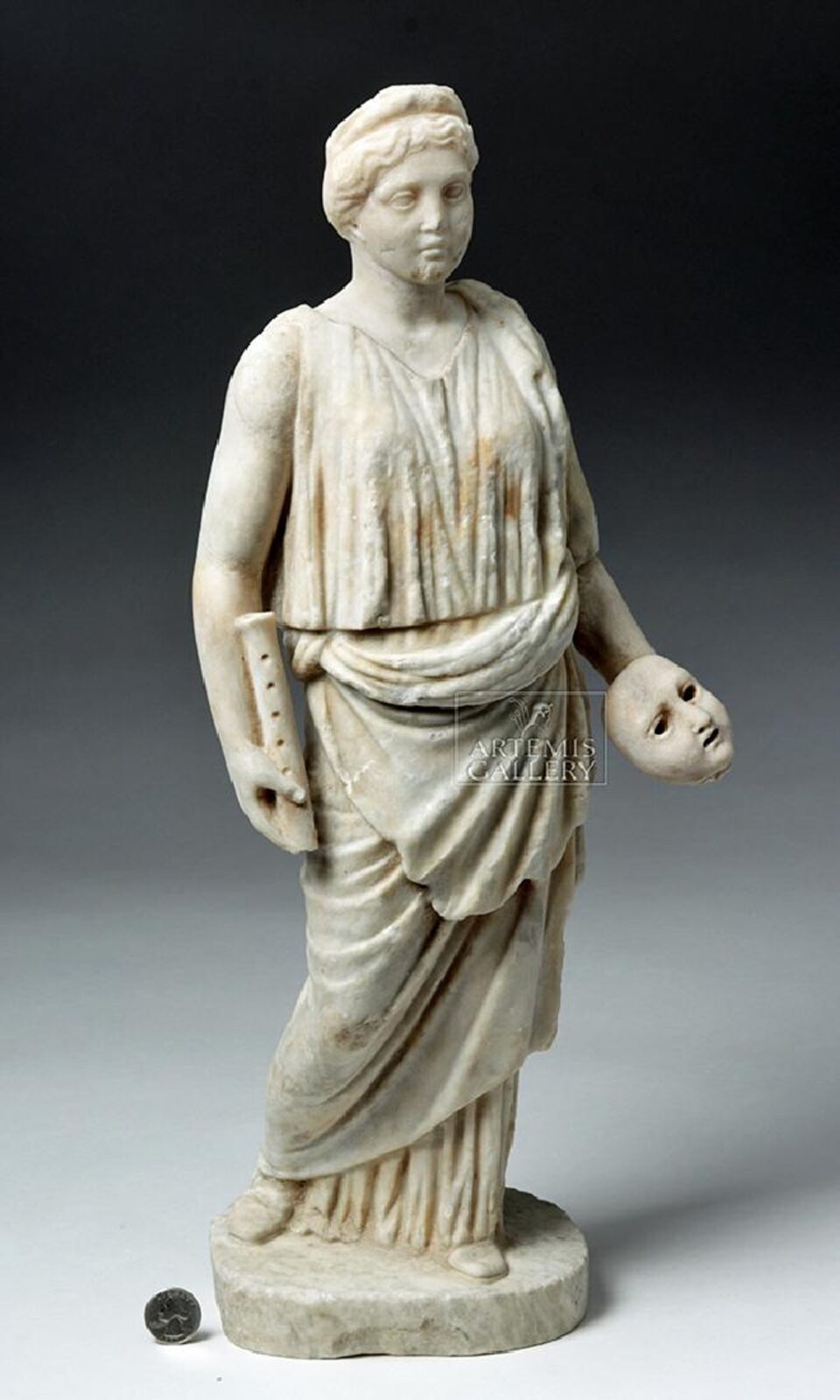
Est. $20,000 – $30,000
Also from the Roman Imperial Period is a stunning aqua blue glass vessel with elegant trailed handles of teal hues. Adding to the decorative aspect of the bulbous body are a trio of teal glass droplets equidistantly spaced around the lower third of the body, as well as traces of rainbow and silvery iridescence. This blown-glass vessel is 3.75 inches wide at widest point and 3.625 inches high ($900-$1,400).
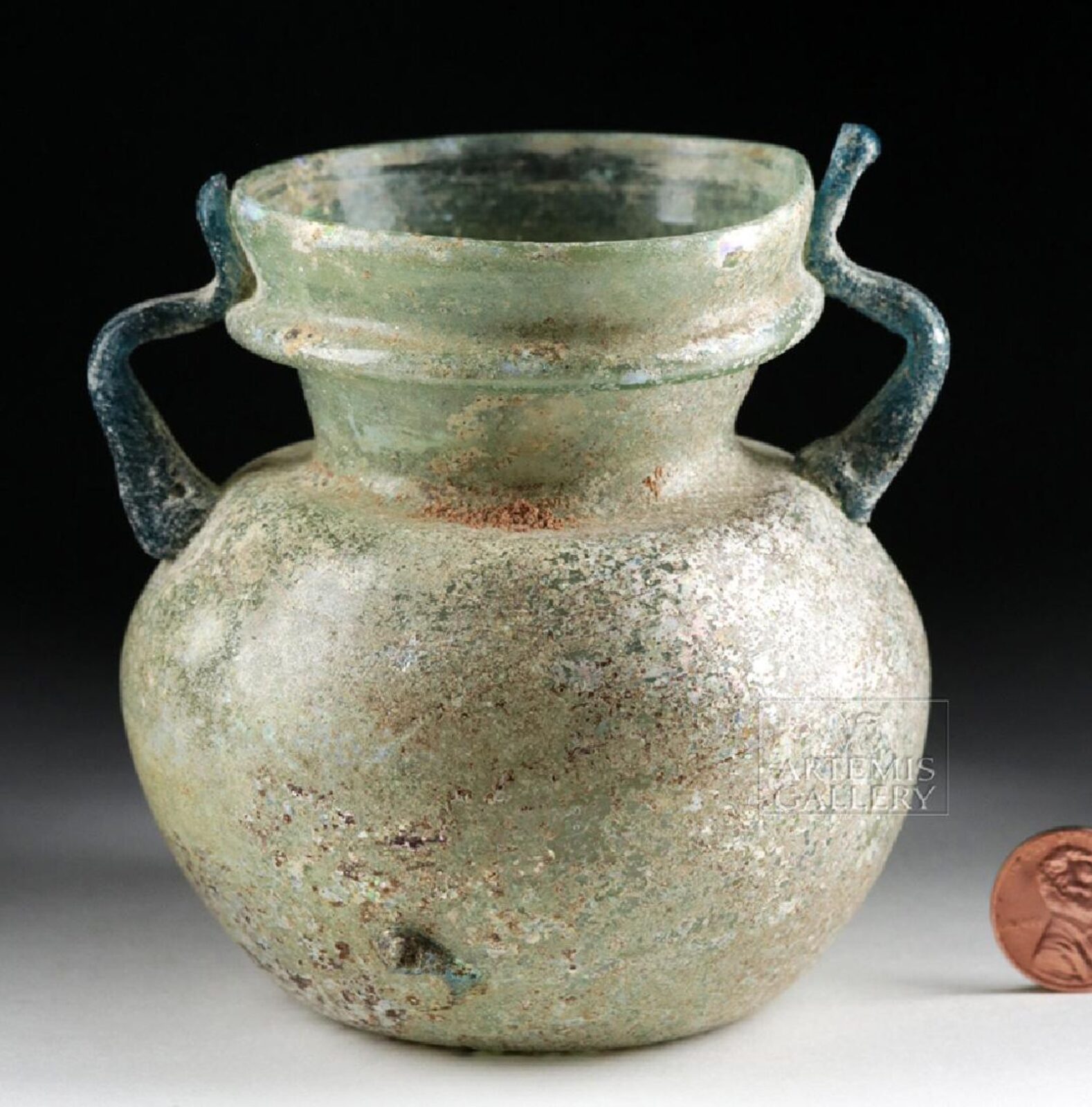
Est. $900- $1,400
Twenty pieces of Viking jewelry are presented in the auction including a Thor’s Hammer amulet on a 28-inch-long knitted silver chain ending in two cast terminals with small stamped triangular designs. The hammer amulet, also known as Mjolnir, is stamped with the same motifs as the terminals. Three small inlaid gold discs and a gold sheet band around the handle of the hammer provide further decoration. Small Thor’s hammers were worn as religious amulets throughout the Viking era. This amulet, which has a $10,000-$12,000 estimate, measures 1.55 inches by 2.55 inches.
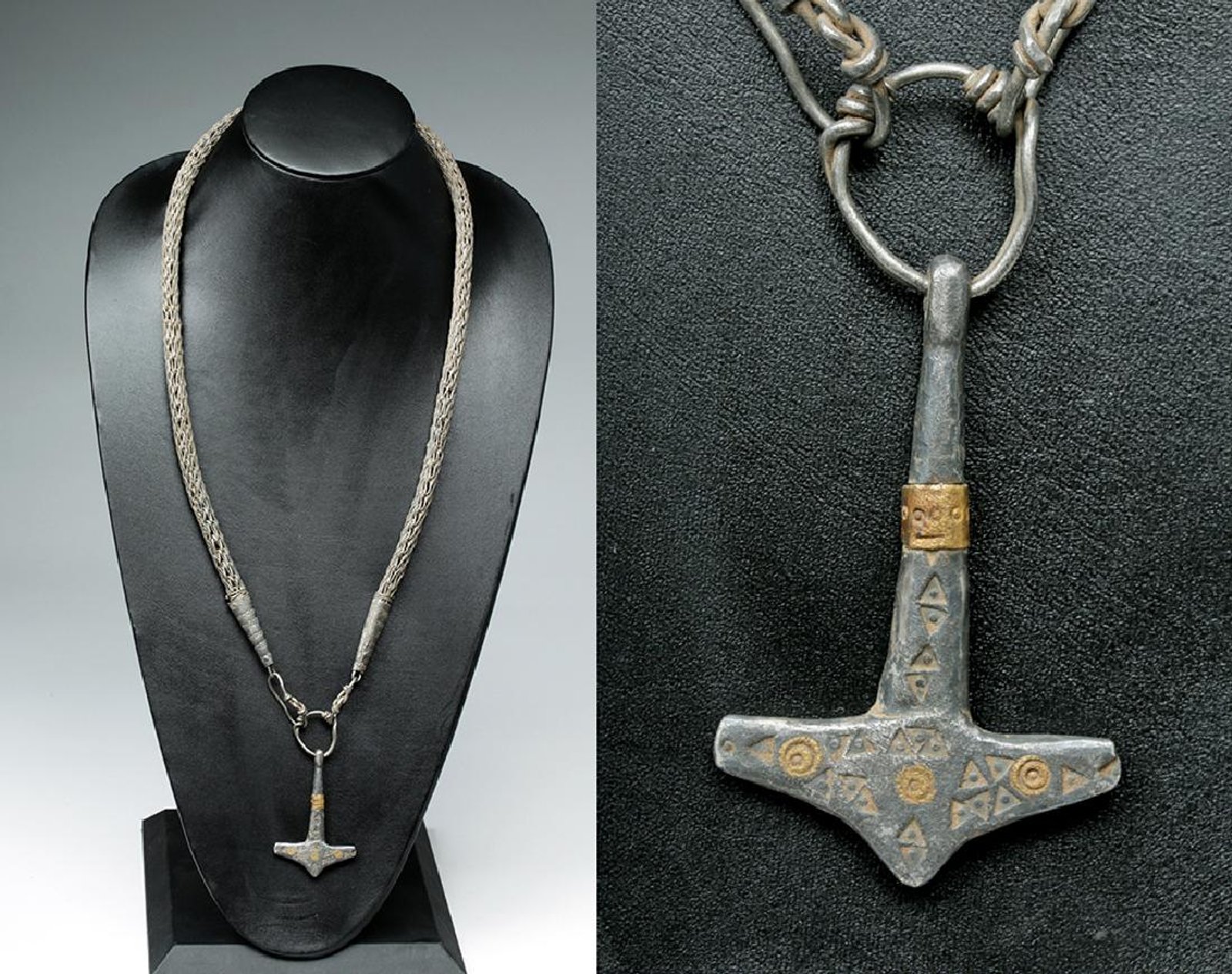
Est.$10,000- $12,000
A diminutive 7,000-year-old Tell Halaf pottery mother goddess originated in Anatolia (central Turkey or northern Syria). The 3.6-inch terra-cotta fertility figure depicts a seated woman with voluptuous breasts and thighs that emphasize her fruitfulness. A custom Lucite display stand is included. The Halaf culture of Anatolia produced mesmerizing female figurines with fertility attributes. Whether images like these were intended to represent real, ideal or divine women is unknown, however, scholars believe that their primary purpose was to encourage female fertility.
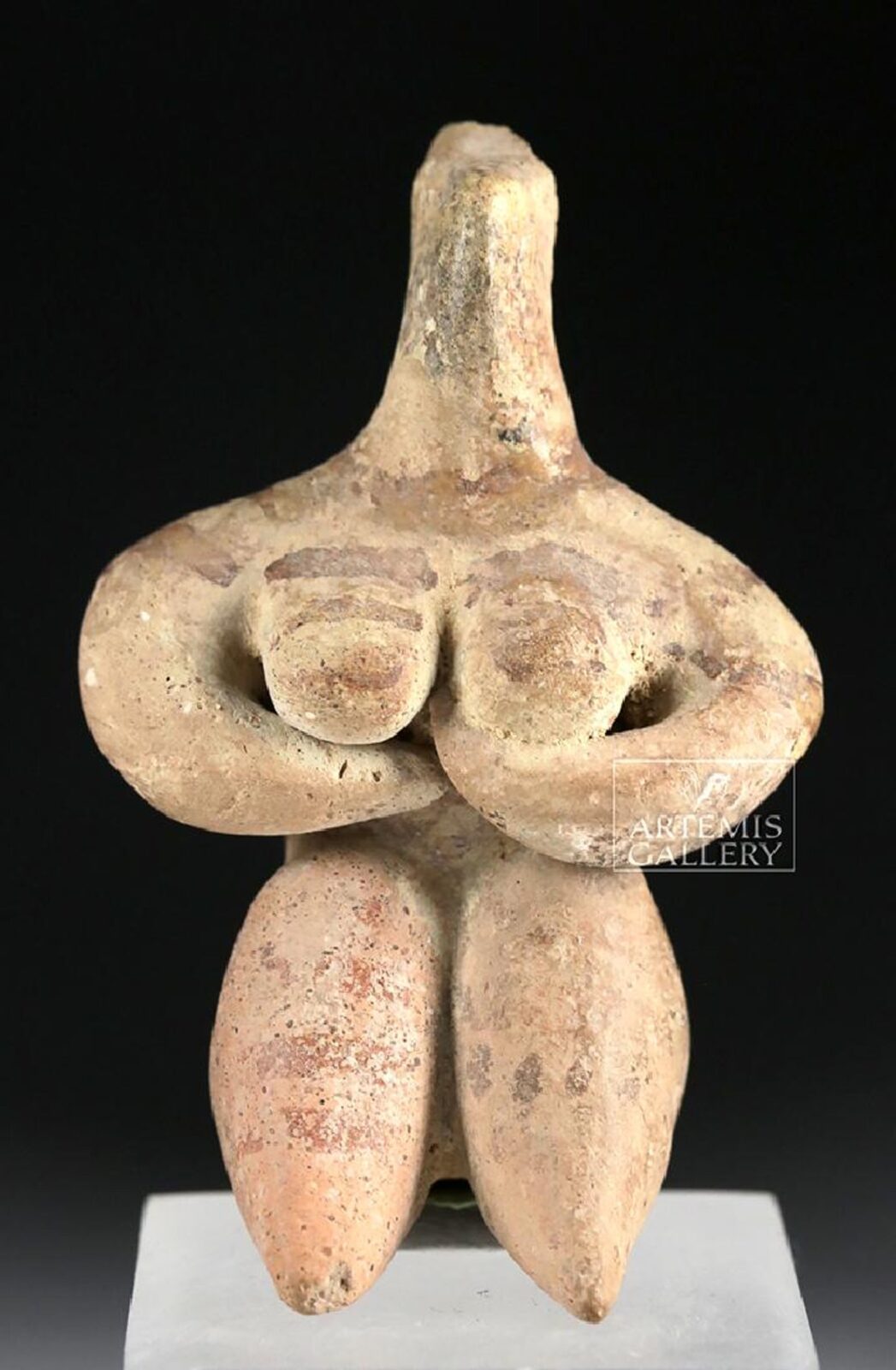
Est. $1,500 – $2,000
Buddhist art in the auction is highlighted by a life-size Gandharan gray schist face of Buddha, which dates to the first century in central Asia. This is a naturalistic carving from the period of Greco-Buddhist art. The Gandharan Empire made itself wealthy in part by controlling lucrative trade along the mountain passes between China in the East and the Near East and Mediterranean in the West. A great deal of this wealth went into local patronage of artisans and art. In the first century, Buddhism became fashionable among Gandharan elites, and the artworks produced at this time depicting the Buddha are some of the most striking Buddhist images. Mounted on an included custom stand, the head is 16.75 inches high (estimate: $15,000-$20,000).
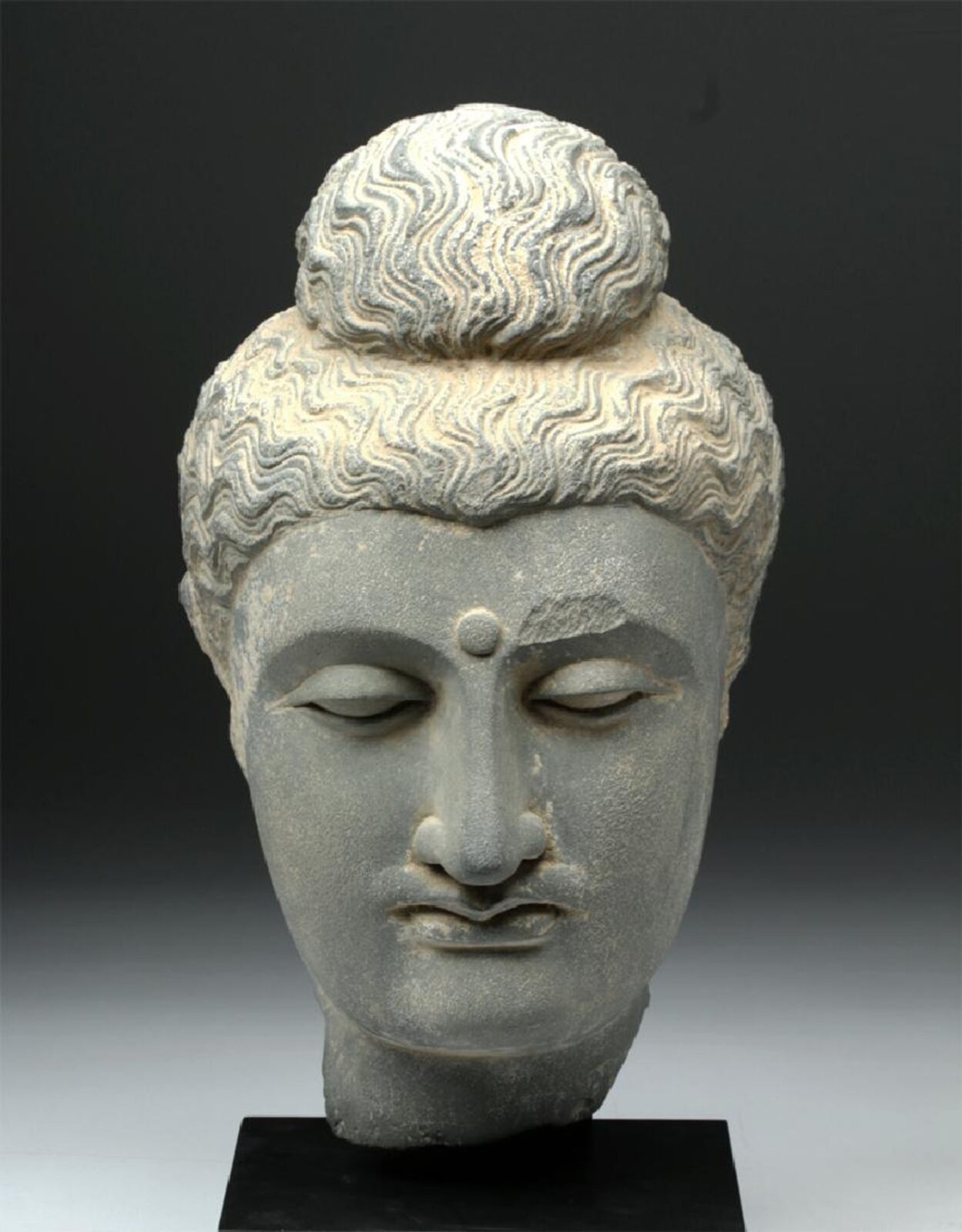
Est. $15,000 – $20,000
Pre-Columbian art in the auction includes an unusual pair of polychrome terra-cotta head vessels from the South Andean highlands of Bolivia. The pair present matching visages comprised of crossed-eyes (a trait characteristic of coastal Tiwanaku visual culture), protruding noses adorned by nose rings delineated in relief, closed lips with labrets also in relief, and tattoos or face paint decorations surrounding their eyes. Each vessel is 7.75 inches high (estimate: $3,000-$4,500).
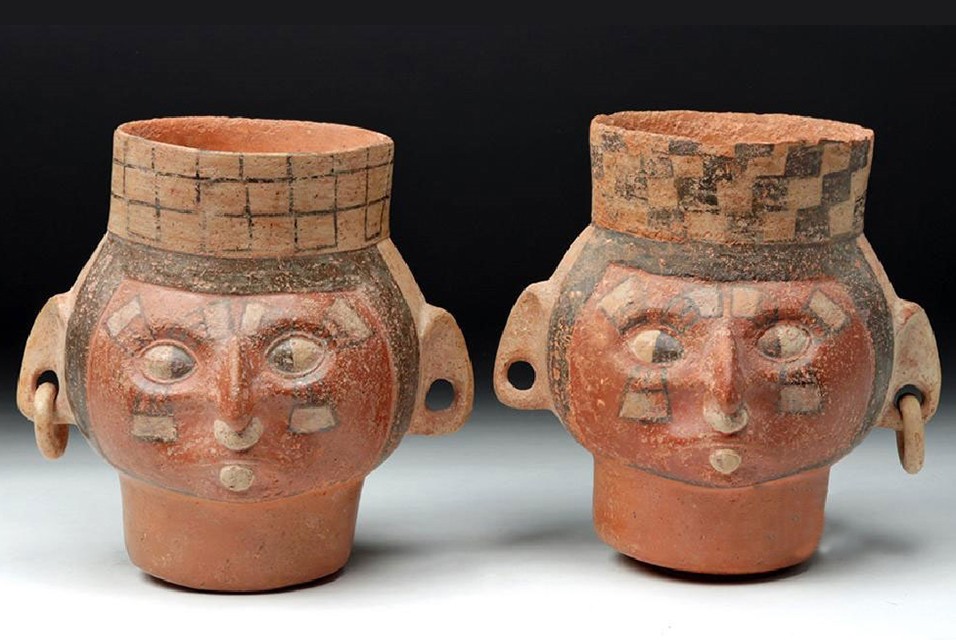
Est. $3,000- $4,500
Moving from ancient times to the 19th century, the auction features a carved wooden granary door from the Toraja culture, South Sulawesi Island, Indonesia. The finely-built door of dense jackfruit wood is carved to depict a buffalo head ($2,000-$3,000). The Toraja are one of the oldest ethnic groups in Indonesia.
Artemis Gallery’s auction will feature more than a dozen Russian religious icons. An outstanding example is the festal icon in egg tempera and gold leaf on wood features the Resurrection of Christ surrounded by scenes depicting the events of Holy Thursday and Good Friday. These scenes are then surrounded by 16 images of feast days celebrated on the liturgical calendar (estimate: $6,000-$8,000).
Absentee and Internet live bidding will be available through LiveAuctioneers.com. All items are guaranteed to be authentic, as described in the auction catalog, and legal to purchase and/or resell. An Artemis Gallery COA will accompany each auction lot.






